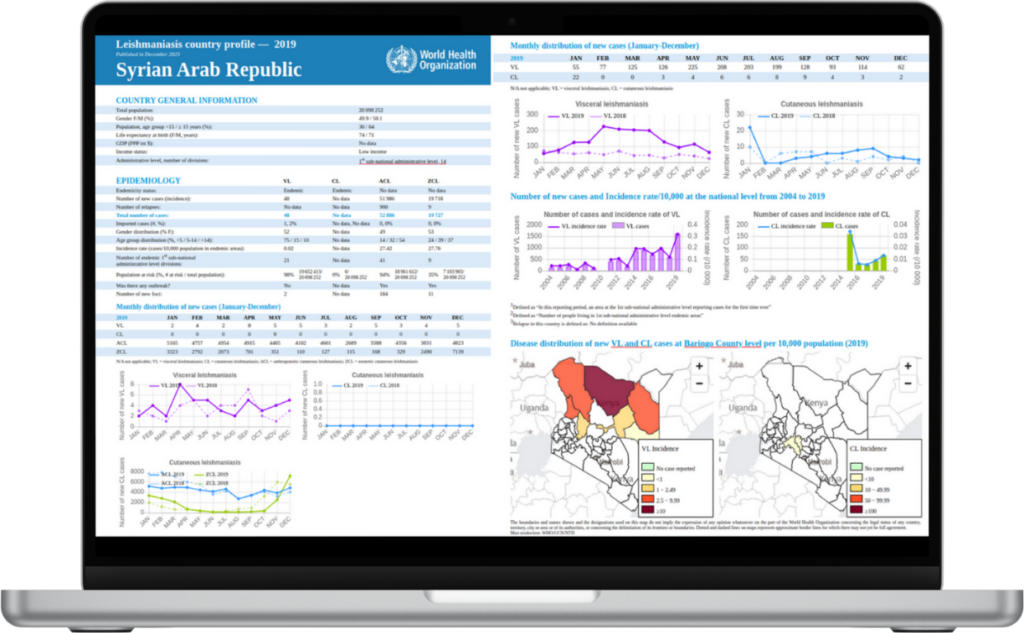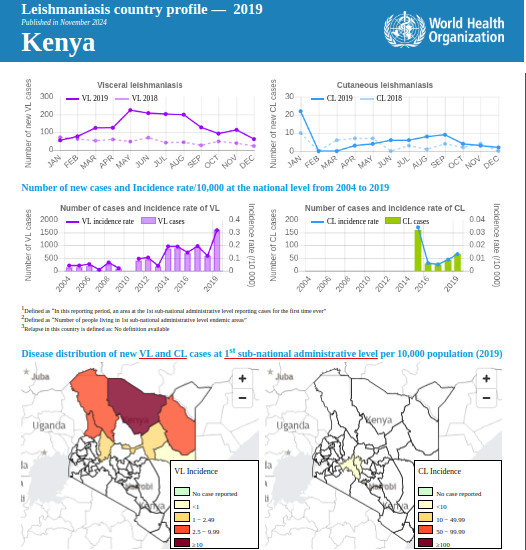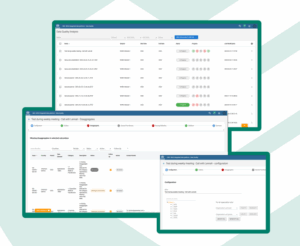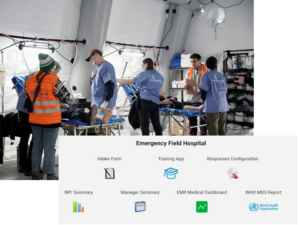Today, more than 1 billion people live in leishmaniasis endemic areas and are at risk of infection. This disease affects some of the world’s poorest people, and its prevention and control is complex and requires many tools. One of these is effective disease surveillance and data. At EyeSeeTea, we are proud to contribute to this through the elaboration of Leishmaniasis country profiles. This information collected by the World Health Oeganization is public and free for all the researchers, officers and health workers working against this neglected but treatable and curable disease.

Leishmaniasis is a major health problem in 4 regions of the world: the Americas, East Africa, North Africa and West and South-East Asia. During the last years the World Health Organization (WHO) has implemented several measures to raise awareness of the global burden of this disease and monitor progress in its control. One of the key implemented activities to strengthen disease surveillance has been the generation of country profiles information. These profiles include breakdown of new, relapse and imported cases, populations at risk, number of people screened, proportion of positive rapid diagnostic tests, treatment including initial cure…
We have created a standardized country profile that will allow national programmes to make better use of their own routine surveillance data and to compare it with other countries
Dr José A. Ruiz-Postigo, Medical Officer, Global Neglected Tropical Diseases Programme, WHO headquarters.
The tools: WHO Integrated Data Platform and DHIS2
These country profiles are being generated and made public since 2017. It is the first time that such detailed data have been made available for leishmaniasis. It enhances data analysis and help evaluate the performance of national control programmes and surveillance systems. The WHO Neglected Tropical Diseases department, after trying several systems, decided that DHIS2 was the best system to collect and process the data. “The evolution of Leishmaniasis data collection has been huge in recent years”, explains Nacho Foche, director of EyeSeeTea, “”Initially, data was collected through phone calls and manually entered into Excel sheets. There was always the chance for human error, and the level of detail collected was very low. That’s all in the past. We have a cutting-edge system in place that provides so much valuable epidemiological insight, allowing experts to effectively combat the disease.”
Any project conducted by WHO is a project we are honoured to be part of, but in this case, when it is one that tackles neglected diseases, we are specially proud of contributing. It is another case where we can also see the huge impact of open source tools such as the DHIS2 software
Nacho Foche, CEO of EyeSeeTea
The NTDs department currently uses the Who Integrated Data Platform (WIDP) to generate the leishmaniasis country profiles. EyeSeeTea is proud to contribute to the app and tools that make these profiles possible and also to the maintenance of WIDP platform. Thanks to this platform, Member States can upload data according to their level of endemicity. For countries that have difficulties in operating through the web-based forms, the system is configured to easily upload data received from MS Excel files through the use of Bulk Load, an app developed by EyeSeeTea as part of our DHIS2 Suite.

A set of core indicators has been developed for the countries to easily adapt and adopt forms in order to collect data for their specific needs, with the freedom to add additional variables or indicators. High‐burden countries from each WHO region are given access to forms containing a larger number of variables (e.g. population at risk, disease distribution by gender and age group, number of cases by month and at subnational level, number of diagnostic tests conducted and results obtained, number of patients treated with each medicine and treatment outcome).
The Leishmaniasis Country Profiles App was one of the first projects I worked on when I joined Eyeseetea. It was incredibly exciting to play a role in developing such a game-changing app. This experience opened my eyes to the immense potential of DHIS2 in addressing challenges like this. It was truly inspiring to delve deeper into the remarkable capabilities of this software
Ana García Peral, Senior Developer at EyeSeeTea
Data captured by WIDP enables the publication of detailed country profiles, interactive dashboards in the Global Health Observatory and articles in the Weekly Epidemiological Record. All this information, publicly available for everyone, and generated thanks to open source tools such as DHIS2, is one of the key tools to help fight Leishmaniasis, one of the neglected diseases that, hopefully, will soon not be one anymore.



